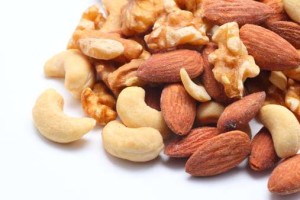 Dietary essential requirements for omega 3 and omega 6 polyunsaturated fatty acids (PUFA) are modest. In the case of omega 6 fats, intakes are well above essential requirements. In modern Western diets, omega 3 fatty acids intakes are low relative to those for omega 6 fatty acids PUFA. Tissue levels of omega 6 and omega 3 PUFA are determined by dietary intakes.
Dietary essential requirements for omega 3 and omega 6 polyunsaturated fatty acids (PUFA) are modest. In the case of omega 6 fats, intakes are well above essential requirements. In modern Western diets, omega 3 fatty acids intakes are low relative to those for omega 6 fatty acids PUFA. Tissue levels of omega 6 and omega 3 PUFA are determined by dietary intakes.
Since omega 6 and omega 3 PUFA compete for the same metabolic pathways, the balance of these PUFA is, in practice, as important nutritionally as the minimal absolute amounts each consumed. This balance, particularly in Western diets, is skewed strongly toward omega 6. The ratio of intakes can be modulated by making choices in food processing and cooking that avoid visible fats, which are very rich in omega 6 PUFA and by opting instead for ingredients that have a significant omega 3 content. The latter can be coupled with monounsaturate fats, since the latter are neutral with regard to omega 6 / omega 3 balance and, in contrast to saturated fats, have no adverse health effects.
Omega 6 and omega 3 PUFA and monounsaturates (i.e. n-9 fatty acids) are present in a number of vegetables and seed oils. The latter, by virtue of their high fat content, are an especially important source of PUFA. PUFA, like all fatty acids, are metabolized for energy. However, a proportion is incorporated into the phospholipids of cell membranes. The cellular PUFA can be elongated and further desaturated. Linoleic acid (LA) omega 6 is converted to arachidonic acid (AA), omega 3. This fatty acid contributes substantially to PUFA at the n-2 position of cell membrane phospholipids.
Mike Maunu – Founder
Oxygen4Life.com
